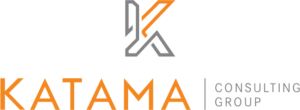Companies usually seek to upskill their employees quickly while keeping costs in check. However, building a full-time learning and development (L&D) team takes both time and money, which is why many organizations are turning to staff augmentation for their L&D requirements. This strategic move helps companies hire expert L&D professionals only when they are needed.
In this blog, we’ll explain how to measure the return on investment (ROI) of L&D staff augmentation simply and practically.
Once companies understand how much they stand to save with staff augmentation, they’ll be more inclined to invest in quality training at a much lower cost than maintaining an in-house team.
What Does L&D Staff Augmentation Mean For You?
L&D staff augmentation means bringing in outside learning experts, like trainers, instructional designers, or learning strategists, for short-term projects.
It’s a type of workforce augmentation that gives your internal team extra, and should we say, expert skills, without the hassle of a permanent hire.
This approach lets companies react faster to business needs, launch learning programs quickly, while staying flexible. It’s part of a broader talent augmentation strategy used by both startups and large companies.
L&D ROI and Why Should You Measure It?
Any business expense has to be justified by the value it brings. Calculating ROI shows whether your investment in L&D augmentation is helping your business grow. It helps you:
- Understand the financial impact of learning programs
- Justify L&D budgets to leadership
- Make smarter hiring or outsourcing decisions in the future
How to Calculate L&D Staff Augmentation ROI?
You can use this simple formula to determine if your L&D staff augmentation has positively impacted your bottom line:
ROI (%) = [(Total Benefits – Total Costs) / Total Costs] x 100
Let’s look at one hypothetical real-world example to understand this better.
A Step-by-Step Example On How to Measure ROI
Imagine your company needs to launch a new compliance training program. You decide to bring in an L&D consultant through staff augmentation for a 2-month project. These numbers are an approximation.
Here’s what you spend:
- Consultant fee: $20,000
- Software and tools: $5,000
- Training materials: $3,000
- Total Investment (Costs): $28,000
After the training is complete, your results include:
- Fewer compliance errors, saving $18,000 in penalties and rework
- Faster onboarding for new employees, saving $12,000
- Better team efficiency, saving 200 hours valued at $10,000
- Total Benefits = $40,000
Now, calculate the ROI as follows:
ROI = [(40,000 – 28,000) / 28,000] x 100 = 42.8%
This means the L&D project gave a 42.8% return on your investment. You saved more than you spent, and your team performed better. While the calculations are not as simple as this, this formula is a launchpad for a better ROI expression and, consequently, justification.
Some Basic Costs and Benefits to Include in ROI Calculation
When calculating ROI due to L&D staff augmentation, include both direct and indirect items as follows:
Cost Factors:
- Consultant or contractor fees
- Software and learning tools
- Course materials and development
- Admin or project management
Benefit Factors:
- Improved employee performance
- Faster training completion
- Fewer errors or rework
- Better compliance
- Higher employee retention
Wrapping Up
L&D staff augmentation is a strategic way to boost your learning programs without hiring full-time employees. When used wisely, it brings fast results and strong returns.
By calculating ROI, companies can see how much value their investment delivers and use that data to build even better training strategies in the future.
FAQs
1. What is staff augmentation?
Staff augmentation in L&D means hiring outside training professionals temporarily. It helps companies fill talent gaps quickly and affordably.
2. How is workforce augmentation useful in L&D?
Workforce augmentation allows L&D departments to expand their capacity for special projects without hiring permanent staff. This is great for sudden compliance training or for onboarding large teams.
3. What are the benefits of talent augmentation for training programs?
Talent augmentation provides access to skilled professionals who bring fresh ideas, faster execution, and proven experience, without long-term costs.
4. How long do staff augmentation contracts usually last?
Most L&D contracts last from a few weeks to a few months. The length depends on the project scope, budget, etc.
5. Can small businesses use L&D staff augmentation?
Yes. Small companies benefit greatly from L&D staff augmentation because it provides expert help without needing to build an internal team.

